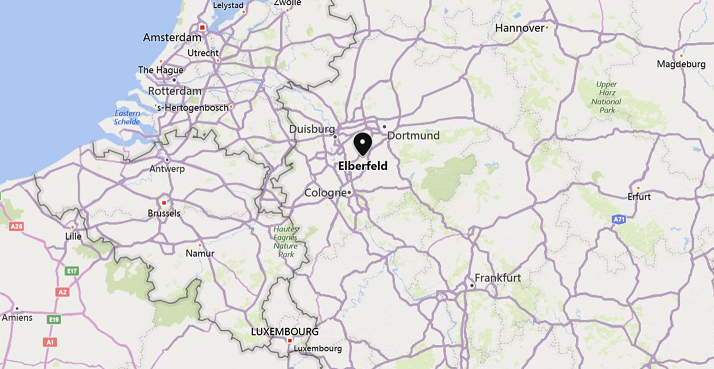The name of this family from Lennep and Elberfeld derives from Frowin, an Old High German first name.
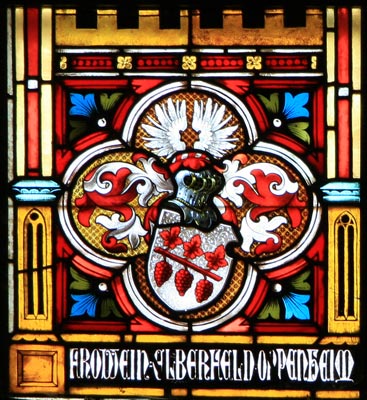
The oldest known ancestor is Hermann Frowin, 1470-1540 at Lennep, (Ratsverwandter und Hospitalmeister). During the Middle Ages, hospitals offered hospitality for travellers: pilgrims, strangers or foreigners. The foundation of the prosperity of Lennep was an influx of Cologne Weavers during the 14th century. Lennep was one of the four capitals of the County of Berg and the residence of the counts from 1226 to 1300.
A junior line of the dynasty of the Ezzonen, a dynasty of Lotharingian stock dating back as far as the ninth century, emerged in 1101 as the Counts of Berg. In 1160, the territory split into two portions, one of them later becoming the County of the Mark, which returned to the possession of the family line in the 16th century
Jaspar (Kaspar) Frowein (1575-1631) moved in 1600 to Elberfeld, where he became Kirchmeister, Ratsverwandter and Bürgermeister.
The County of Jülich united with the County of Berg in 1348 and in 1380 the Emperor Wenceslaus elevated the counts of Berg to the rank of dukes, thus originating the Duchy of Jülich-Berg. In 1509, John III, Duke of Cleves, made a strategic marriage to Maria von Geldern, daughter of William IV, Duke of Jülich-Berg, who became heiress to her father’s estates: Jülich, Berg and the County of Ravensberg. With the death of her father in 1521 his estates came under the rule of John III, Duke of Cleves — along with his personal territories, the County of the Mark and the Duchy of Cleves (Kleve) in a personal union.
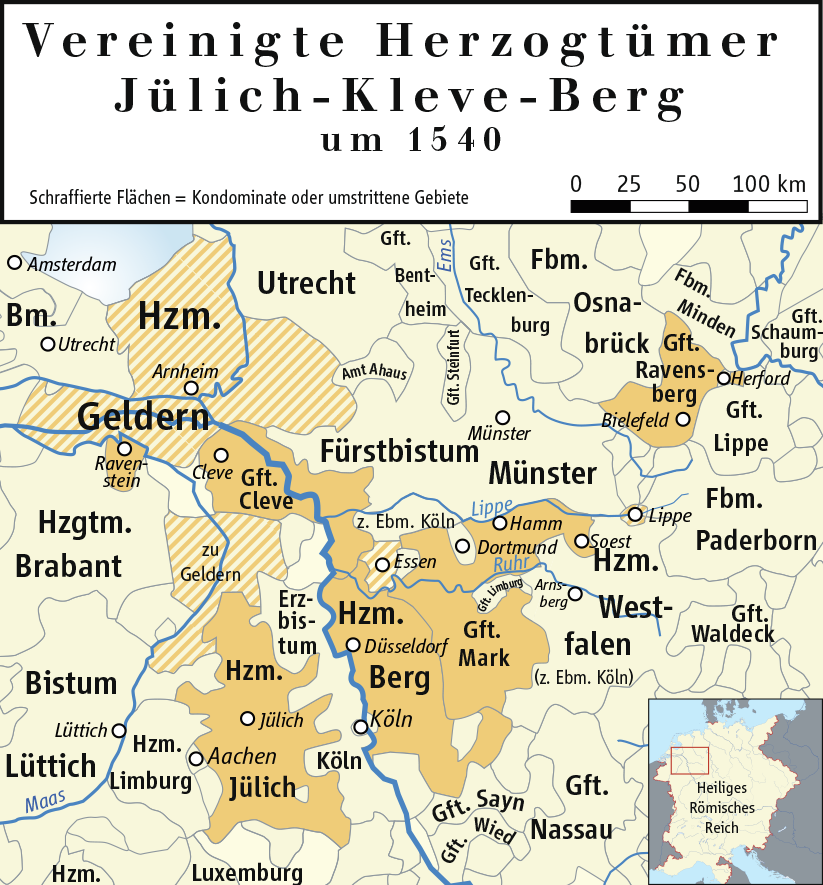
John represented a compensatory attitude, which strove for a via media, a middle way, between the two confessions during the Reformation. The real influence at the court of Cleves was Erasmus. Many of his men were friends and followers of this well-educated Dutch scholar and theologian. When Duke John decided to write up a list of church regulations, Erasmus was the first person the Duke went to personally for consultation and approval. The court of John of Cleves was fundamentally liberal, but serious-minded, theologically inclined, and profoundly Erasmian.
While the Religious Peace of Augsburg in 1555 reserved the right of the ruler to determine the confession of his subjects, the Duke of Jülich-Kleve-Berg/Count of Mark-Ravensberg did not use that option; in his territories Catholicism and Lutheran Protestantism coexisted (Berg remained predominantly Catholic).
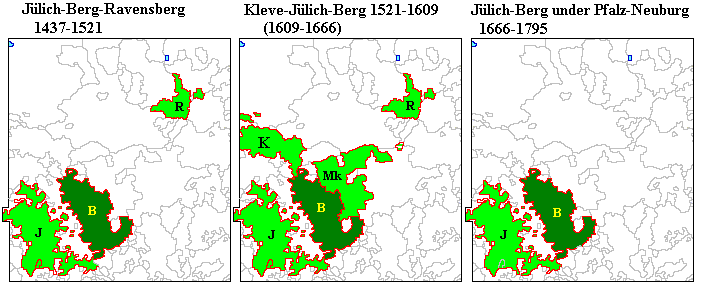
When Pfalz-Neuburg and Brandenburg succeeded in 1609, they declared they did not to want to interfere with the faith of its citizens. The Pfalz-Neuburgers reneged on their original proclamation and in 1627 forbade the eucharist being distributed in any non-Catholic manner.
Genealogy of this Frowein family:
Kaspar Frowein (13.3.1640-10.12.1679)
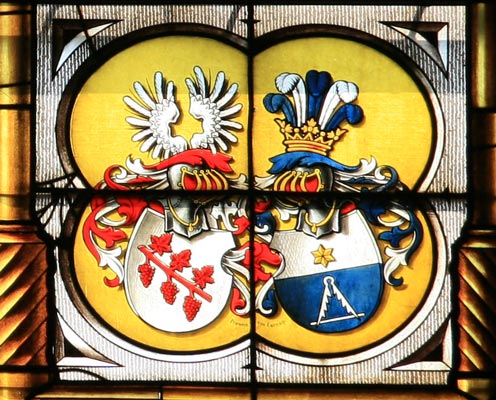
Johann Peter Frowein (25.12.1670-12.11.1725)
Johann Kaspar Frowein (15.9.1700-11.7.1743)
Johann Kaspar Frowein (4.6.1731-11.9.1814)
Abraham Frowein (29.1.1766-16.3.1829)
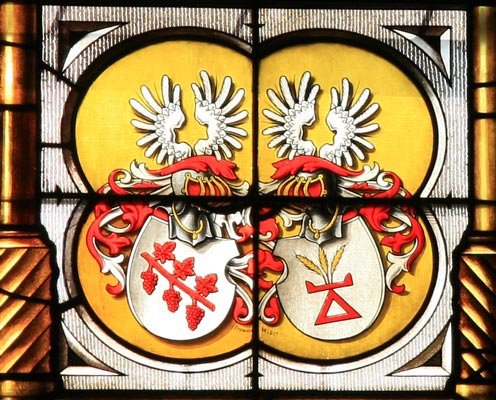
Abraham Frowein (29.1.1766-16.3.1829) and his wife Charlotta Luisa Weber (30.9.1770-27.12.1833), daughter of Daniel Adolf Weber, Bürgermeister von Elberfeld 1788.
August Frowein (10.10.1805-25.3.1850)
August Frowein / von Frowein (19.5.1839-10.10.1912), Associate of the City of Elberfeld, was elevated to the Peerage (Potsdam 17.6.1910).
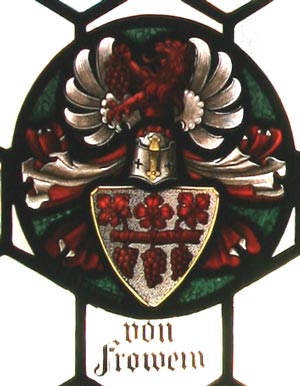
Julius August von Frowein (14.7.1869-18.10.1931) married Elisabeth Furmans (16.8.1877-24.4.1967), daughter of Heinrich Wilhelm Furmans (26.3.1835-12.4.1893) and Maria Luise Pferdmenges (5.10.1840-4.4.1907).
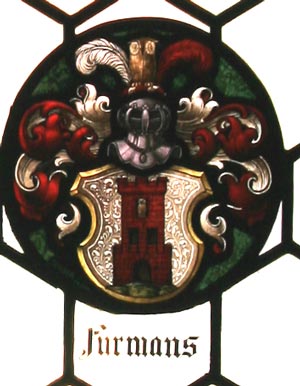
These Wappen in Glasfenstern are located in Katharinenkirche (St. Catherine’s church) in Oppenheim, which is regarded as an important Gothic church building on the Rhine, along with the cathedrals of Cologne and Strasbourg. Construction began probably in 1225, when Oppenheim was granted Town privileges. Since the merger of the Lutheran and Reformed congregation in 1822, it is a United Protestant church and its congregation forms part of the Protestant Church in Hesse and Nassau.
